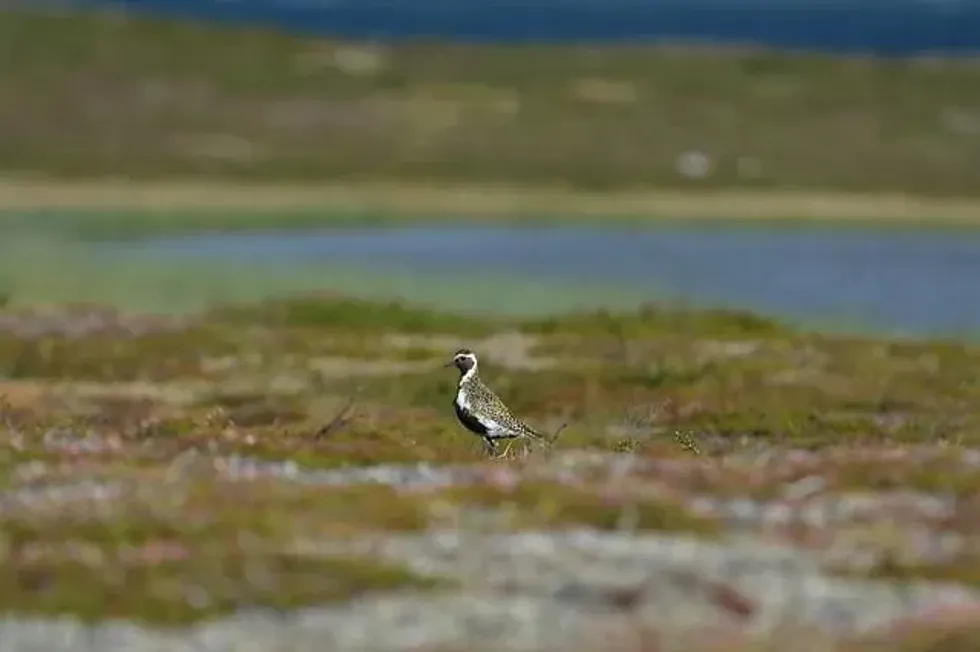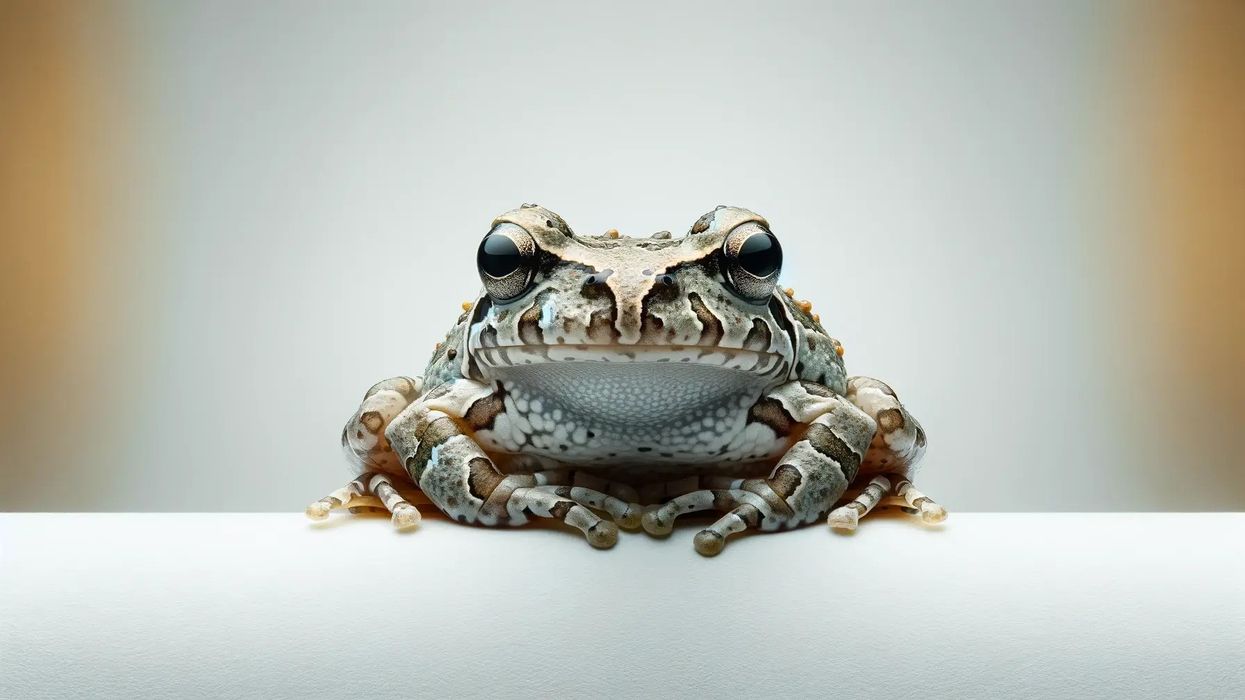Are you curious to find out about the mountain plover, Charadrius montanus? This article will tell you everything you need to know about this species, from its favorite habitat to the state of its population, and where it builds its nest.
The mountain plover is a bird found in North America, from southern Canada to northern Mexico. It lives in great plains, preferring short grass, bare ground, and sparse vegetation to set up its breeding ground.
The mountain plover is often seen setting up its nest in prairie dog towns or among bison, which graze and keep the grass very short. Read on to find out more about this species, including what is being done to protect it!
If you'd like to find out about other species of birds, check out the secretary bird and the common moorhen.
Mountain Plover Interesting Facts
What type of animal is a Mountain Plover?
A mountain plover is a bird.
What class of animal does a Mountain Plover belong to?
The mountain plover belongs to the class Aves of birds.
How many Mountain Plovers are there in the world?
Although it is not known exactly how many mountain plovers there currently exist in the world, the population has been estimated to be in the range of 15,000 to 20,000 including between 11,000 and 14,000 adults.
The population numbers of mountain plovers are being monitored closely as they are seriously diminishing. This is partly due to the low survival rate of nests and chicks when they are hatching, which is between 25 and 65%.
Eggs are endangered by changes in temperatures and predators such as snakes, coyotes, and foxes. The mountain plover is also threatened by urbanization and the cultivation of its habitat.
Where does a Mountain Plover live?
Savannas and other dry grasslands.
What is a Mountain Plover's habitat?
Mountain plovers are most commonly found in grassy plains in North America, ranging from Alberta and Saskatchewan in Canada to New Mexico and Texas in the United States, and regions of northern Mexico. During the breeding season, mountain plovers will establish territory in about 70 acres of land, reducing to 25 acres outside of the breeding season.
Unlike its name seems to imply, the mountain plover does not live in the mountains, preferring level land. It also avoids bodies of water and even wet soil, favoring dry grasslands and bare soil as it is easier to forage in.
The mountain plover's habitat also often coincides with that of bison or prairie dogs, as they graze and keep the grass at an ideal length for the birds' breeding range.
Groups of mountain plovers can be found migrating south to Colorado or central New Mexico in July, after breeding season. In November, they move further south to warmer wintering grounds.
Who do Mountain Plovers live with?
Mountain plovers are gregarious birds, meaning they tend to gather in loose flocks, especially during migration in winter.
How long does a Mountain Plover live?
A mountain plover can live for about 10 years.
How do they reproduce?
As they are birds, mountain plovers are oviparous, meaning they reproduce by laying eggs.
The breeding season is in summer and generally ends in July or August, after which the birds migrate south. The male establishes a breeding territory and puts on a physical display to attract females.
After mating, females lay several clutches of three eggs, which are off-white with dark spots.
Both parents incubate the eggs: the female leaves the male to incubate the first nest while she goes off to lay another clutch which she will incubate. Sometimes, females will mate with several males to lay more clutches, as this might help ensure the survival of more chicks.
Eggs are very vulnerable to temperature changes and predators, which is why the mountain plover builds nests on flat, dry soil with short grass. The mountain plover's breeding ground often coincides with prairie dog colonies or bison as they graze the graze which means there is short grass for the nests.
Once they are hatched, the families sometimes move a few miles from the nesting site to a better feeding area.
What is their conservation status?
Mountain plovers were proposed as a threatened species in 1999 and were maintained as threatened in 2009, under the Endangered Species Act.
Mountain Plover Fun Facts
What do Mountain Plovers look like?

Mountain plovers are not sexually dysmorphic, meaning both males and females are the same size and appearance. Their backs and the top of their heads are brown while their abdomens are bellies are white.
Mountain plovers have a white face, very dark eyes, and a dark stripe on each side of their face between their eyes and their bill.
Their bill is quite long, straight, thin, and black. Younger individuals look similar to adults but lack the black forecrown on the head and the lores, which are the dark strips on the side of their face.
How cute are they?
Mountain plovers are small and agile birds, and as such can be considered cute or delicate.
How do they communicate?
Mountain plovers' calls are variable, they are either gurgling, low whistling, or low-pitched trilling. During the mating season, they make a mooing sound. However, mountain plovers are much less noisy than their relatives, the killdeer species.
How big is a Mountain Plover?
A mountain plover is about 9 inches long on average, slightly smaller than a hedgehog.
How fast can a Mountain Plover fly?
Although it is hard to estimate exactly how fast this species can fly, they are migrating birds so must be able to fly for long distances at a high speed.
How much does a Mountain Plover weigh?
Mountain plovers are very small birds and weigh in at about 3.5 oz (100 g).
What are the male and female names of the species?
There are no specific names for the male and female individuals of this species.
What would you call a baby Mountain Plover?
A young or juvenile mountain plover is called a chick.
What do they eat?
This species of bird mostly eats insects, small invertebrates, and arthropods. For this reason, it often lives around livestock, which attracts and stirs up insects for the plovers to eat. Bare ground and sparse vegetation also help the mountain plovers to forage and spot insects.
Are they dangerous?
No, this species is not considered dangerous - unless you are a small insect that the bird likes to eat!
Would they make a good pet?
Mountain plovers would not make a good pet, they are a wild species and enjoy having a large habitat and a breeding range, as well as migrating to a winter range when it gets cold. They would not fare well in captivity.
Did you know...
The mountain plover was misnamed after an American naturalist, John Kirk Townsend, who spotted a bird near the Rocky Mountains in 1922. This species does not always live in the mountains and returns to its natural habitat in the great plains during spring.
The word 'plover' comes from the Latin word 'pluvia', meaning 'rain'. This is because, in Medieval England, migratory birds such as plovers return to their breeding ground in spring, at the same time as the rain. Another misnomer for the mountain plover, which prefers a dry habitat!
Why are mountain plovers endangered?
Mountain plovers are primarily endangered because of the loss of their habitat to cultivated land and urbanization. More buildings and fields are put in place in the great plains where these North American birds like to settle.
Furthermore, the nest and eggs of the mountain plover are delicate and extremely vulnerable to predators and temperature changes, which means the chicks' survival rate is not very high. As such, the population of mountain plovers is steadily and dangerously decreasing.
Saving The Mountain Plover
The population of mountain plovers is being closely monitored to make sure the bird is protected as much as possible.
In a study conducted in 2005, the link between mountain plovers and prairie dogs was established, especially in Montana. It was observed that mountain plovers are very likely to build a nest in prairie dog towns, so if these prairie dog towns could be preserved, the higher the chance of saving mountain plovers.
It has been proposed that breeding grounds and wintering habitats should be preserved, preventing their conversion into urban or cultivated land. An emphasis is being put on favored breeding grounds such as Montana.
Research is also being conducted into nest and chick survival to help population growth.
Here at Kidadl, we have carefully created lots of interesting family-friendly animal facts for everyone to discover! Learn more about some other birds including the boreal chickadee and the oak titmouse.
You can even occupy yourself at home by drawing one of our Mountain Plover coloring pages.










